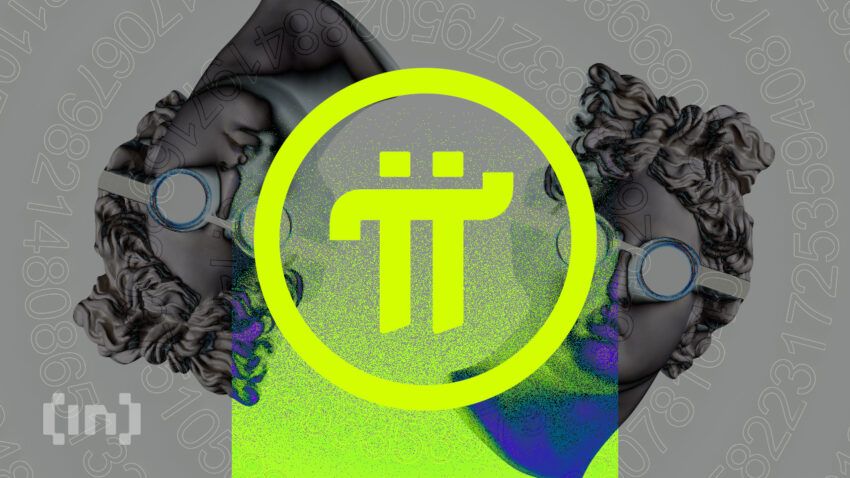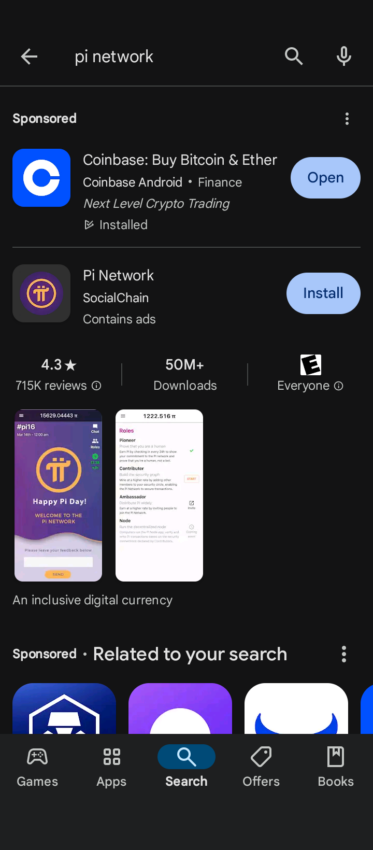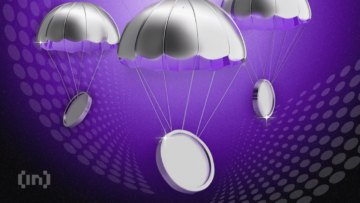Pi Network is a cryptocurrency that introduces a novel approach to crypto mining. Though, this didn’t come without controversy. Just the mention of Pi Network spurs up concerns regarding its legitimacy. Learn about Pi Network, how to mine it, and the latest theories surrounding its authenticity in this ultimate guide.
KEY TAKEAWAYS
• The Pi Network is a cryptocurrency that lowers the barrier to entry for mining using a mobile device.
• By simply installing an app on your phone and pressing a button, mining is accessible to anyone.
• Users must receive an invitation from other users on the network to complete the mining process.
• Some critics have concerns around its legitimacy, particularly because of the coin’s value and delay in the mainnet launch.
What is Pi Network?
The Pi Network is a cryptocurrency project that aims to provide ease of access to crypto mining using a digital mining app. The network utilizes a cooperative consensus mechanism for its users, validating transactions through collaboration, rather than competition.
The project’s goal is to fix the centralization of first-generation cryptocurrencies like Bitcoin — which has given the top mining pools more control by allowing anyone to mine at no cost. By using just a mobile app and a referral code, you can receive digital currency in the form of Pi coins which can be saved until the crypto is listed on exchanges.
Pi is really accessible to everyone out there. People can mine it by themselves using their mobile phones. So as long as you have a mobile device you can participate. And then, once you have mined it and eventually, especially when we migrate everyone to the mainnet…then you can use that currency to perform various activities on the network.
Dr. Nicolas Kokkalis, Pi Network co-founder
That said, the Pi coin currently has no value. The trading conducted on many platforms is really just of IOUs or speculative promises rather than the underlying PI. These trades are speculation about what the future price of a coin will be once fully tradable

How did Pi Network begin?
Pi Network’s core team includes two Stanford University researchers who founded the project in 2018. Head of Technology Dr. Nicolas Kokkalis is the instructor for Stanford’s first decentralized application class. Alongside him, the head of product, Dr. Chengdiao Fan, holds a Ph.D. in computational anthropology with a focus on human-computer interaction.
Their goal was to provide equal opportunities to everyone who wishes to mine crypto without expensive mining hardware and high fees. After the release of the Pi Network’s whitepaper, the project successfully launched its app on International Pi Day (Mar. 14, 2019).
By June 2019, the network had reached 100,000 active users, followed by a dramatic increase of more than 3.5 million during its second phase. In March 2022, the Pi Network claimed that its user base had reached 33 million.
How does Pi Network work?

Users who wish to join the network and mine PI must download the Pi Network’s mobile app, available on Android and iOS. The only thing you need to do is register with your phone number, Apple ID, or Facebook and provide a referral code.
The success of the network is dependent upon its expansion. Therefore, membership is via invitation. If a user doesn’t successfully refer another person, the mining sessions won’t achieve completion. You can still mine without a referral, but the rewards will be significantly less.
Mining on the network is done by simply pressing a button daily as the rewards replenish every 24 hours. Due to Pi’s regular halving —- an event in which the number of coins mined is reduced to half —- the network attracts more users due to its scarcity. In addition, the network remains secure by Pi’s “security circle” whereby groups of 3–5 users vouch for one another’s credibility through trust graphs.
Membership tiers
Participants can move up in rank as they invite more users onto the network through their referrals. For example, the first level is Pioneer, which is rewarded according to the mining rate at the time of joining. As you move up through the three membership levels, the hourly Pi coin rewards increase.
After five or more trusted referrals, you get promoted to the Contributor level. And after 23 referrals, you become an Ambassador. In addition to the membership tier, one can move up to the Node level if they run the Pi node software on their computer.
Consensus algorithm
The network is governed by the Stellar Consensus Protocol (SCP). This protocol was specifically chosen to aid in the user-friendly mobile mining experience by enabling users to incentivize their activities on the network by earning rewards. The mechanism it uses is the novel Federated Byzantine Agreement (FBA) which allows anyone to join the network and become a validator instead of a fixed group.
As opposed to alternatives like proof-of-work (PoW) or proof-of-stake (PoS), SCP relies on the agreement of trusted nodes to reach a consensus. This method verifies transactions through a series of messages between the nodes before finalizing them on the blockchain.
What makes Pi Network unique?

Mining cryptocurrency certainly isn’t a new concept. However, many mining protocols require miners to invest in expensive hardware or use up considerable amounts of electricity. Pi Network is unique in that no expensive hardware is needed. In fact, you don’t need to invest any money at all. Here is a rundown of some of the features that set the Pi Network apart.
Stellar consensus protocol
Created by a chief scientist at Stellar Development Foundation, David Maziéres, who developed the Stellar blockchain, the SCP protocol uses a real voting system. In this case, the protocol enables an open membership network and allows fast and efficient messaging between nodes.
In the Beta stage, the mobile app simulates mining as users take part in block validation. As mentioned before, through its Federated Byzantine Agreement, each validator on the network decides which other validators they trust instead of being chosen by a central authority. On the Pi Network, the list of trusted validators is referred to as the quorum slice.
Mobile mining
Normally, when mining crypto, investors need to purchase a piece of equipment that can cost up to thousands of dollars. But with Pi, mining is done via a phone app which is free to register and use. Moreover, very little data usage and battery power are used up during the mining process. Instead of investing money upfront, users on the network can earn Pi coins by just referring others to the network or running their own node on their computer.
Cooperative consensus
Traditional mining is done individually, on your own time, and according to the work you put in. However, the success of the Pi Network depends on the number of participants. To mine crypto and gain membership levels, you must invite others to join.
Conversely, with cryptocurrencies like Bitcoin, nodes must compete against each other to validate transactions. With Pi, the more nodes you invite to the network, the more rewards you receive for securing the network.
Roadmap
According to the official Pi Network white paper, the project’s roadmap is divided into three distinct phases.
- Phase 1 – Design, Distribution, Trust Graph Bootstrap: Improvements in user experience and behavior are highlighted during this phase. Once the live net is launched, coin minting to users will be migrated.
- Phase 2 – Testnet: The node software will be deployed on a testnet before launching the mainnet and use the same exact trust graph but on a testing Pi coin. The testnet will run parallel to the Pi emulator in the first phase.
- Phase 3 – Mainnet: Once the mainnet goes live, only validated accounts belonging to real individuals will be honored. The emulator and faucet of phase one will then be shut down, and the system will run on its own thereafter.
Pi coin (Pi)

Pi coin (PI) is the native cryptocurrency that runs the Pi Network app. The network remains secure due to this coin. However, since the coin has not been listed on any exchanges, it currently holds no real value. Its value is pegged to its scarcity which is achieved through its regular mining reward halving.
Tokenomics and distribution

The total supply of Pi Network is 100 billion PI. However, the self-reported circulating supply is 68 million PI. Upon launch, 20% of PI will go to the team, while the remaining 80% will go to the community. Since the token has yet to be listed and is governed by referrals, the formula for calculating the token supply and distribution differs.
- Total Max Supply: M + R+ D where M represents “mining reward,” R represents “referral rewards,” and D represents “developer rewards.”
- Mining Supply: A fixed mining supply is established for every person who joins the network up to the first 100 million participants. Therefore, a fixed amount of PI is pre-minted and is released in time based on the user’s engagement.
- Referral Supply: Based on fixed referral rewards minted per person and shared with or by referrer and referee.
- Developer Supply: Additional PI minted to support development as the network scales.
How to mine Pi cryptocurrency

Since you cannot actually purchase the coin, you can mine Pi via the Pi Network app, which can be downloaded on iOS or Android devices. Here is a brief explanation of how to do so.
Step 1: Download the Pi Network app
First, you need to download the app on your mobile device. Just head over to your phone’s app store and search for Pi Network. Once you find it, scroll down and press “Install.”

Step 2: Register an account
Once downloaded, you will be asked to sign up with Facebook, phone number, or Apple ID. You will then fill in your personal details. Select a name and password. If you do not KYC or provide inaccurate personal details, you will forfeit your balance.

Step 4: Submit your invitation code
Users who have been invited to the network by referral will be asked to provide the invitation code. Otherwise, if you join without one, your mining rewards will be minimal. You miss out on the opportunity to mine 25% more of your base mining rate.

Step 4: Start mining
When you get started, you will have the option to explore the menu. To start mining, just click on the button on the top right side of the screen, highlighted in green. You will need to click the button every 24 hours to replenish your mining.

Step 5: View your earnings
In addition, you can always refer to the app to view your earnings, mining rate, and all the details of your membership when you click on the mining button again.

Pros and cons of Pi Network

As we have stated previously, there are a lot of benefits to Pi Network’s innovative approach. In particular, the lower barrier to entry for joining the network. Users need only a mobile device to begin mining, and they can register for free. Additionally, the consensus mechanism also prioritizes collaboration rather than competition.
On the other hand, many people have criticized the Pi Network for employing multi-level marketing or pyramid scheme mechanics. MLM schemes have been given a bad reputation for allowing people on higher levels to earn more than those at lower levels. Yet, many argue this isn’t the case with Pi.
The fact that only the developers are making money from the network is also a cause for suspicion. Additionally, the coin does not have any value and the long wait time before a mainnet is actually launched is cause for concern.
| Pros | Cons |
|---|---|
| Start mining with a phone | Requires KYC |
| Doesn’t require expensive hardware | Mainnet launch delay |
| Nodes collaborate with each other | Can not trade the PI coin |
| Register for free |
Pi Network adds a new dimension to mining
While many investors shy away from traditional mining due to expensive machines and power usage, Pi Network may have provided a viable solution. Given the controversial nature of the project, such as the lack of a Pi coin, mainnet, or blockchain, the network remains speculative.
However, if the developers of Pi Network manage to reach phase three of their plans, a new dimension of crypto mining will ensue. The innovative concept of mobile mining with no money down would give access to just about anyone. As of now, the only thing to lose is your time.
Want to discuss Pi Network with like-minded people? Join BeInCrypto Trading Community on Telegram: discuss, share your experience and read all the hottest news on Pi Network. Join now
Frequently asked questions
Is Pi Network still free?
What is the current price of Pi coin?
Is Pi coin a scam?
Is Pi coin real or fake?
What is Pi Network?
When will Pi Network reach phase 3?
Can I buy Pi coin?
How many Pi coins are there?
Disclaimer
In line with the Trust Project guidelines, the educational content on this website is offered in good faith and for general information purposes only. BeInCrypto prioritizes providing high-quality information, taking the time to research and create informative content for readers. While partners may reward the company with commissions for placements in articles, these commissions do not influence the unbiased, honest, and helpful content creation process. Any action taken by the reader based on this information is strictly at their own risk. Please note that our Terms and Conditions, Privacy Policy, and Disclaimers have been updated.




